Nama hispidum, Bristly Nama
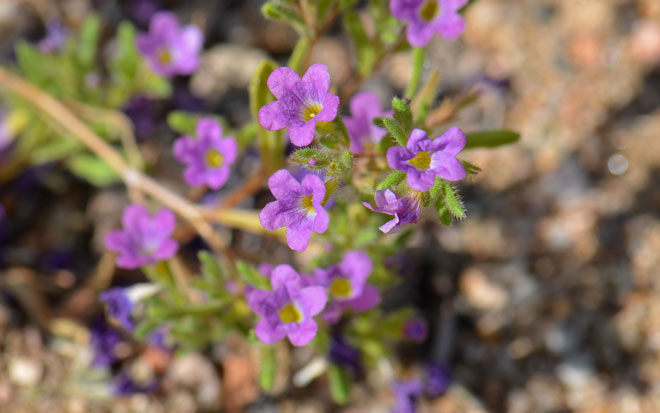
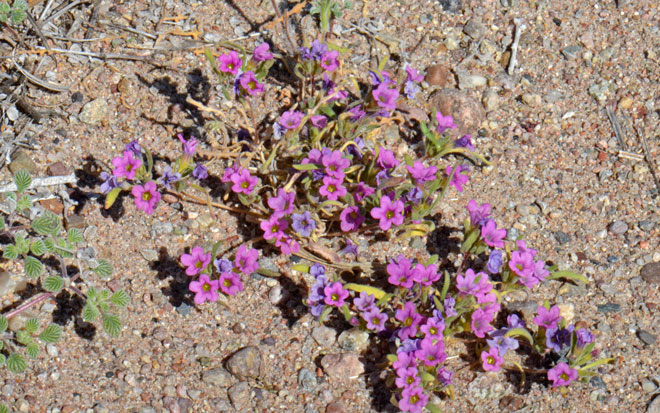
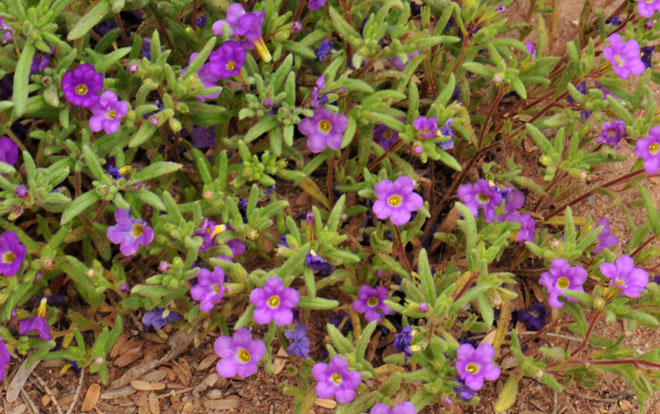
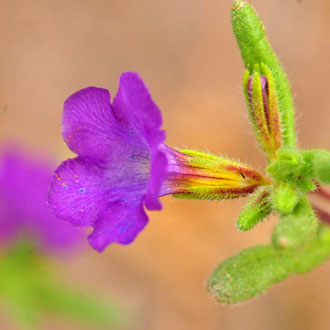
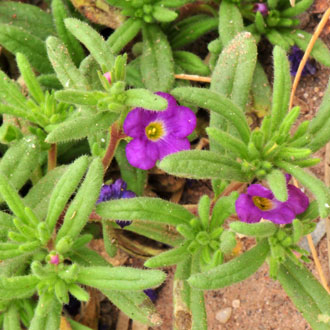
Scientific Name: Nama hispidum
Common Name: Bristly Nama
Also Called: Hispid Nama, Purple Mat, Sand Bells (Spanish: Flor Morada)
Family: Hydrophyllaceae (Boraginaceae, Hydrophylloideae), the Waterleaf Family
Synonyms: (Nama foliosum, Nama hispidum var. mentzelii, Nama hispidum var. revolutum, Nama hispidum var. spathulatum, Nama tenue)
Status: Native
Duration: Annual
Size: Up to 6 inches or so, sprawling a foot or more.
Growth Form: Forb/herb; ground-hugging mat, mostly ascending but also erect, dense hairy.
Leaves: Green; linear, 1 or 2 inches long, often fleshy, revolute without petiole.
Flower Color: Purple or reddish-purple, blue or deep pink; flowers in clusters on very small pedicels, flowers funnel- or bell-shaped, fruit a capsule.
Flowering Season: February to June.
Elevation: Up to 5,000 feet.
Habitat Preferences: Dry plains and mesas, usually sandy, sandy loam or gravelly soils.
Recorded Range: Bristly Nama is found in the southwest United States in; AZ, CA, CO, MD, NM, NV, OK, TX and UT. It is also native to Baja California and northern Mexico.
North America & US County Distribution Map for Nama hispidum.
U.S. Weed Information: No information available.
Invasive/Noxious Weed Information: No information available.
Wetland Indicator: No information available.
Threatened/Endangered Information: No information available.
Genus Information: 22 species in Nama in the United States and Mexico. 6 species in Arizona. The Plant List includes 132 scientific plant names of species rank for the genus Nama. Of these 54 are accepted species names.
Previously there were 3 varieties which have all been returned to Nama hispidum.
Comments: In years of sufficient winter rainfall Bristly Nama forms huge areas of large purple or reddish-purple mats.
Bristly Nama is closely related to and similar in appearance to Purplemat, Nama demissum.
Parts of Bristly Nama were used by the Navajo (Kayenta )as a lotion for spider bites. See ethno-botanical uses at Native American Ethnobotany, University of Michigan, Dearborn.

